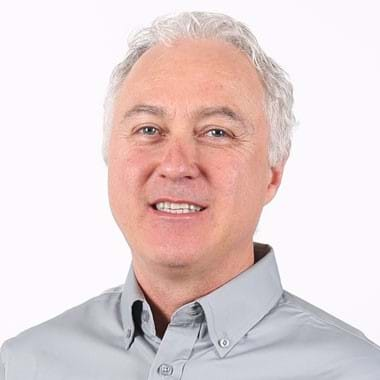Exclusion nets for organic apple production in Eastern Canada

Gérald Chouinard
Researcher, agr., Ph.D.
450 653-7368
ext 340
Description
The aim of this project was to test the general hypothesis that exclusion nets, when properly used, can prevent attacks by most apple pests and reduce disease incidence with no major adverse effects on fruit quality. The system was adapted specifically to conditions in Eastern Canada and a water barrier treatment added (depending on the results) to protect against apple scab.
Objective(s)
- Measure the effects of this protection system on fruit quality and profitability in the orchards’ geographic and climatic context (humid climate east of the Rockies)
From 2014 to 2018
Project duration
Fruit production
Activity areas
Pest, weed, and disease control
Service
IRDA helps Québec growers adopt eco-friendly tools.

Partner
Organic Agriculture Center of Canada (Dalhousie University)
Publications
Scientific article • Gérald Chouinard, Francine Pelletier, Mikaël Larose, Vincent Philion, Daniel Cormier
Chouinard, G., J. Veilleux, F. Pelletier, M. Larose, V. Philion and D. Cormier. 2017. Impact of exclusion netting row covers on arthropod presence and crop damage to ‘Honeycrisp’ apple trees in North America: A five-year study. Crop Protection. 98(2017) 248-254. Exclusion nets made from biobased polymers DownloadPresentation • Gérald Chouinard, Francine Pelletier, Mikaël Larose, Daniel Cormier
Chouinard, G., F. Pelletier, J. Brodeur, P. Abram, J. Veilleux, M. Larose, D. Cormier. 2017. Effet du type de filet et de l’utilisation de produits répulsifs sur l’efficacité d’exclusion et le comportement de ponte de la tordeuse à bandes obliques (Choristoneura rosaceana) et de la punaise marbrée (Halyomorpha halys). Présentation donnée dans le cadre du Congrès de la Société d’entomologie du Québec, Longueuil. IRDA. 18 pages. Exclusion nets made from biobased polymers DownloadPresentation • Gérald Chouinard, Vincent Philion, Francine Pelletier
Chouinard, G., V. Philion, F. Pelletier, J. Veilleux, D. Cormier, J. Tavares. 2017. Filets d'exclusion pour la production de pommes sans pesticides : 5 années d’essai avec le cultivar Honeycrisp. Présentation donnée dans le cadre du Colloque Bio pour tous. IRDA. 33 pages. DownloadPresentation • Gérald Chouinard, Mikaël Larose, Francine Pelletier, Vincent Philion, Daniel Cormier
Chouinard, G., M. Larose, F. Pelletier, J. Veilleux, D. Cormier, V. Phillion. 2017. Production de pommes sans pesticides par exclusion des ravageurs : impacts sur l'entomofaune et quelques surprises après 6 ans d’observations . Présentation donnée dans le cadre du Congrès de la Société d’entomologie du Québec, Longueuil. IRDA. 38 p. DownloadScientific article • Gérald Chouinard, Francine Pelletier, Mikaël Larose, Vincent Philion, Valentin Joubert, Daniel Cormier
Chouinard, G., F. Pelletier, M. Larose, V. Philion, V. Joubert, D. Cormier, J. Veilleux. 2018. Impact of Exclusion Netting Row Covers on ‘Honeycrisp’ Apple Trees Grown under Northeastern North American Conditions: Effects on Photosynthesis and Fruit Quality. Insect. 10(214) 17 p. DownloadSummary sheet • Mikaël Larose, Gérald Chouinard, Francine Pelletier, Daniel Cormier, Vincent Philion, Luc Belzile
Larose, M., G. Chouinard, F. Pelletier, J. Veilleux, D. Cormier, V. Philion, L. Belzile. 2018. Des filets pour l’exclusion des ravageurs et pour la production de pommes sans pesticides à l’abri des aléas climatiques. IRDA. 4 p. Exclusion nets made from biobased polymers DownloadPresentation • Francine Pelletier, Gérald Chouinard, Mikaël Larose, Daniel Cormier
Pelletier, F., G. Chouinard, J. Brodeur, P. Abram, J. Veilleux, M. Larose, D. Cormier. 2019. Insectes ravageurs et insectes bénéfiques présents sous filets d’exclusion en verger – influence de la taille des mailles. IRDA. Présentation offerte dans le cadre des JARIT 2019. 23 p. Exclusion nets made from biobased polymers DownloadPresentation • Gérald Chouinard, Francine Pelletier, Mikaël Larose
Chouinard, G., F. Pelletier, M. Larose. 2019. Exclusion nets: a step towards pesticide-free apple growing in North America. XI International Symposium on Protected Cultivation in Mild Winter Climates & International Symposium on Nettings and Screens in Horticulture. International Society for Horticultural Science (ISHS). January 29, 2019. DownloadThis may interest you
Large-scale use of codling moth mating disruption in Quebec orchards
The aim of our project was to increase the acreage on which mating disruption is used against the codling moth in all of Québec’s apple-growing regions.
Researcher: Daniel Cormier

Sterile insect release as a biological control method for the spotted wing drosophila: sterilization protocol, competitiveness of irradiated males, and releases in semi-natural conditions
The project consisted of sterilizing spotted wing drosophilas in the laboratory and mass releasing it in crops as a biocontrol method.
Researcher: Annabelle Firlej

Developing a sprayable attracticide to control tephritid flies in fruit production
The aim of the project was to test a series of attracticides that can be mixed and applied with regular sprayers with no additional specialized or expensive equipment or modifications required.
Researcher: Daniel Cormier


